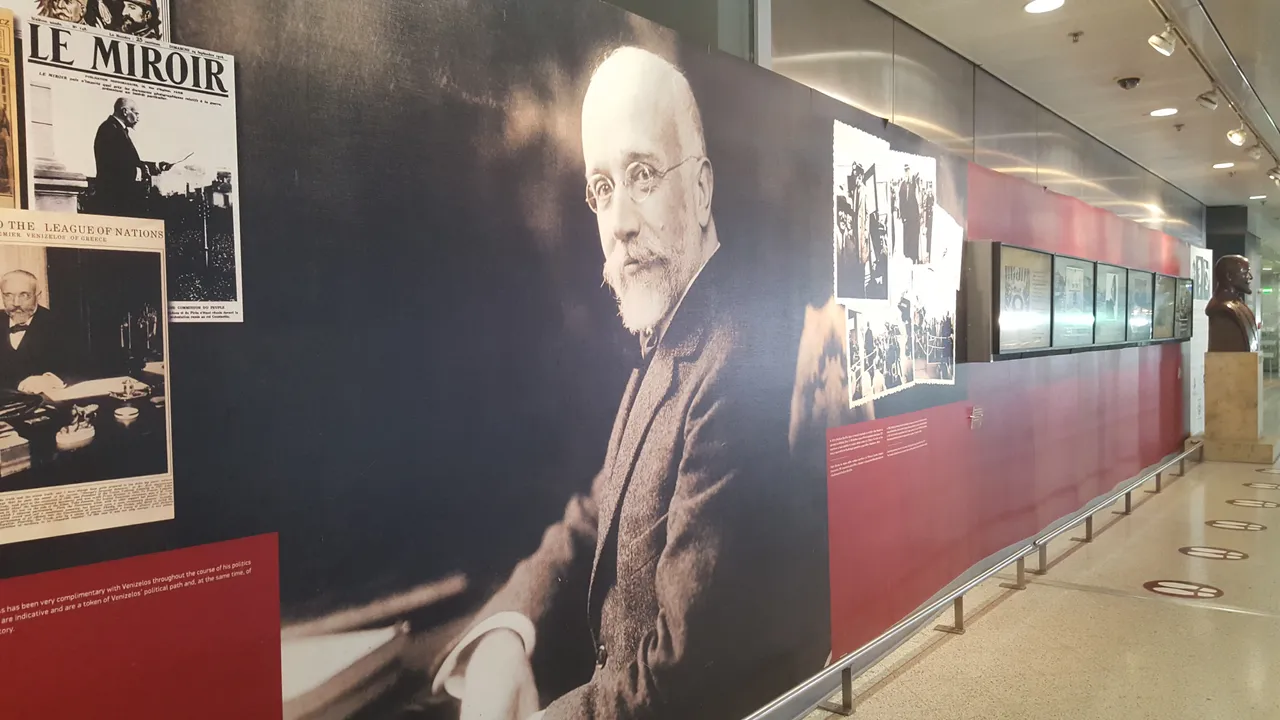I have traveled a number of times via Athens Airport and I am sure we have shared some common thoughts.
What is there to see at an airport? What do you do if you have some spare time or a flight delay?
Well, you find shops (oh, so nice and so expensive sometimes), you find cafeterias, you find restaurants and also places to charge your phones Did you know it? I have recently discovered it!
But there is more to know here ..
I discovered a hidden, secret place, hiding on top of a stair (at the right side when entering at the Departures Hall)
Right Now it is Christmas Time, so you will see beautiful garments & feel the pleasant atmosphere!

As you walk at the corridor, you find a nice space with a variety of vases, rings, earthenware jars dated years back centuries B.C.
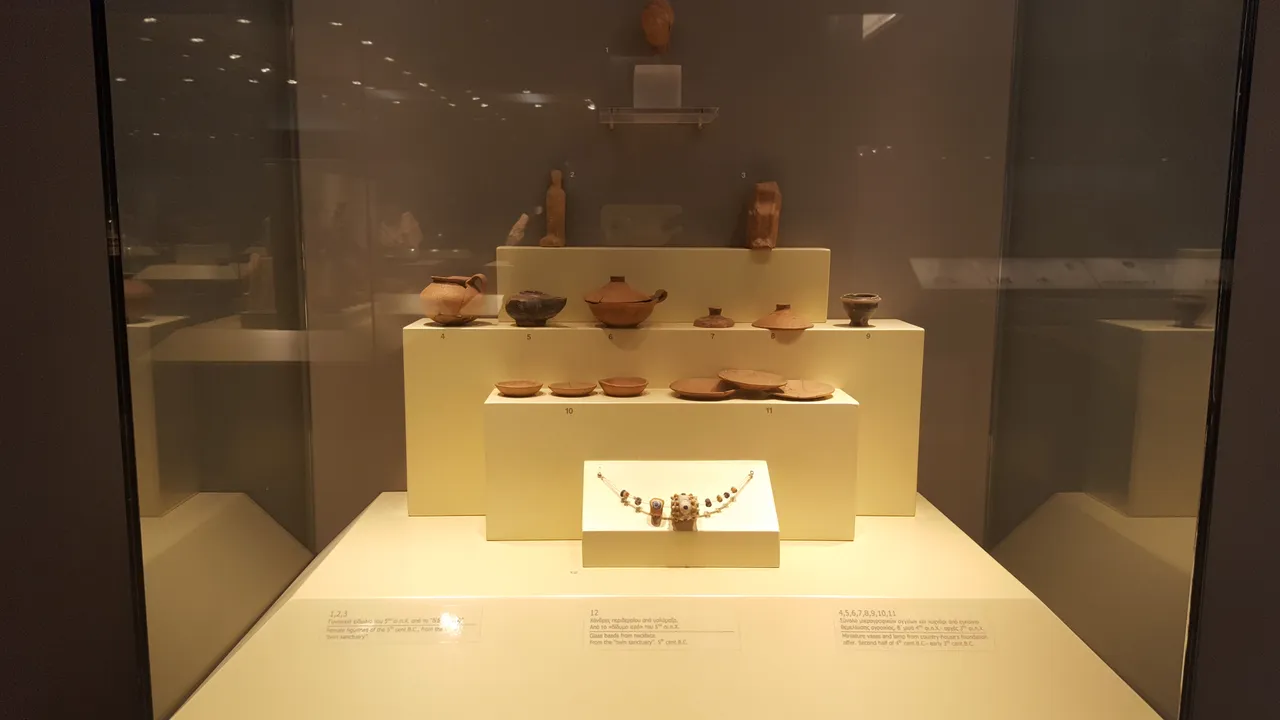
During the Classical Period in Greece, there was prosperity and jewelry did reach a rather high for the time being level, while new techniques and designs were developed.
You could read more about Classical Greece here
The impressive necklace is made of glass beads from the "twin sanctuary" 5th century B.C
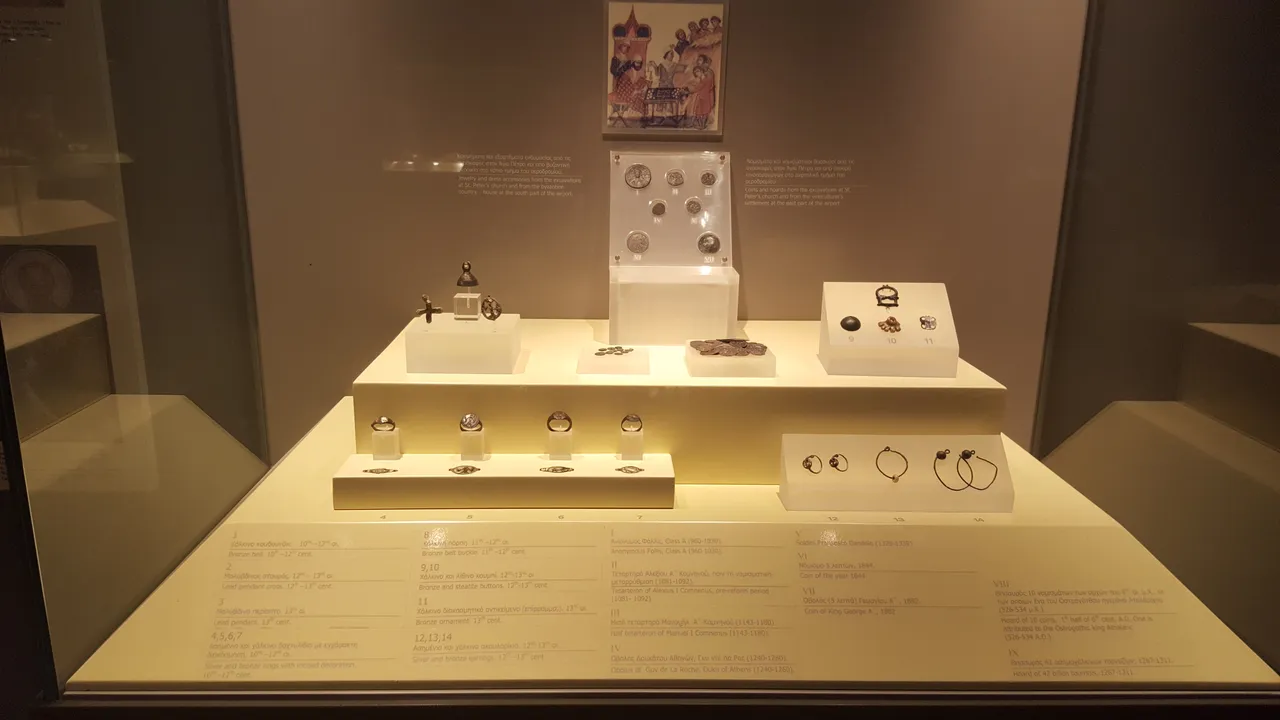
At Ancient Greece, the wealthy women would put on gems, necklaces and pearls, bracelets and rings, while sometimes they would have jewels on their clothes.
What about vases? There are all sort of different kinds, some beautifully painted and decorated...

These decorated vases were placed on grave sites as a mark of elite status. There are many types of funerary vases, such as amphorae, kraters, oinochoe, and kylix cups, among others. One famous example is the Dipylon amphora. Every-day vases were often not painted, but wealthy Greeks could afford luxuriously painted ones.
Sphinx from Spata. A stele crown.

Sphinx from Spata. A stele crown. - Athens, National Museum - 570-550 B.C.
A Sphinx refers to a mythical creature with the head of a human and the body of a lion.
In Greek tradition, it has the head of a human, the haunches of a lion, and sometimes the wings of a bird. It is mythicised as treacherous and merciless. Those who cannot answer its riddle suffer a fate typical in such mythological stories, as they are killed and eaten by this ravenous monster. This deadly version of a sphinx appears in the myth and drama of Oedipus. Unlike the Greek sphinx, which was a woman, the Egyptian sphinx is typically shown as a man.
source: wikipedia
The Peploforos
Move forward to see a cool video from Acropolis Museum (if you have missed it, you should not have!) and also a nice statue called the 'Peploforos'
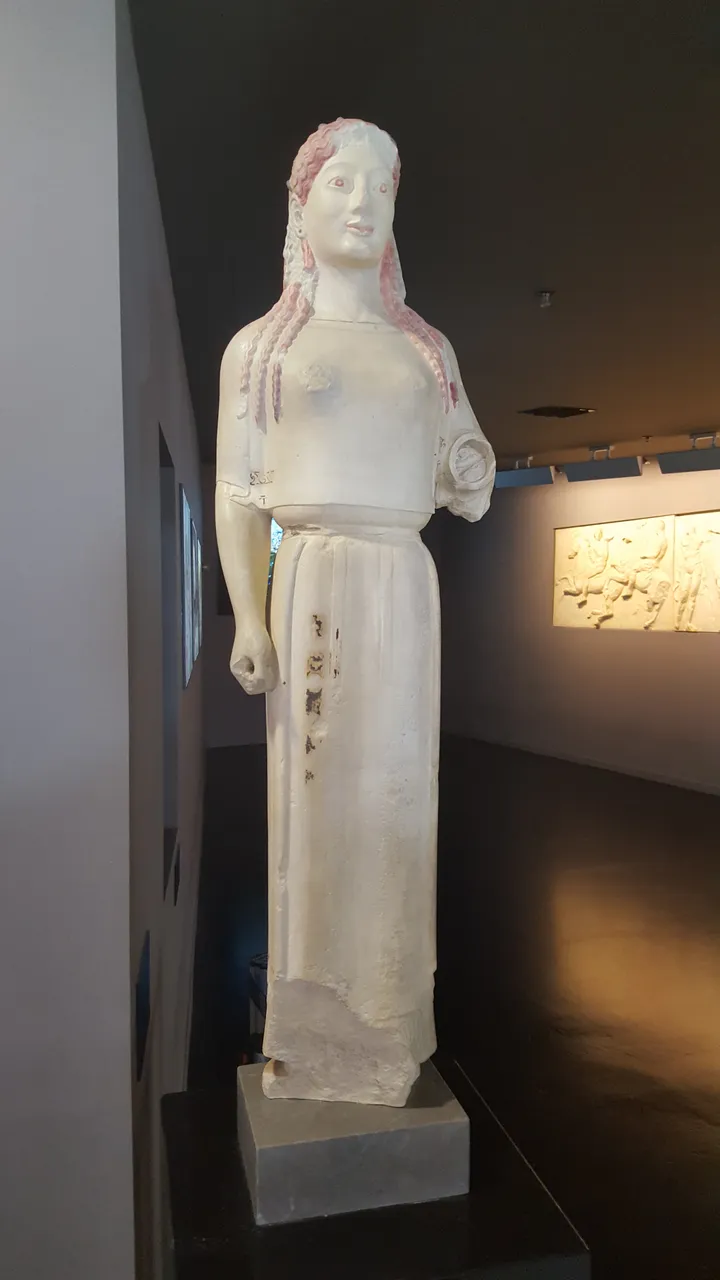
She owes her name to the garment she wears, a type of peplos. It is possible that the statue does not represent a Kore, but the Goddess Artemis with arrows and a bow in her hands.
Around 530 BC. Marble from Paros (Acr. 679)
Here is an interactive 'color the peploforos' if you have some more minutes to spare
Right next to the Peploforos, you will have the chance to travel fast forward (a bit too steeply?) to the 1900 and follow the history of Eleftherios Venizelos, a Greek Politician (1864-1936) who got the International Athens Airport named in his honor.
Eleftherios Venizelos
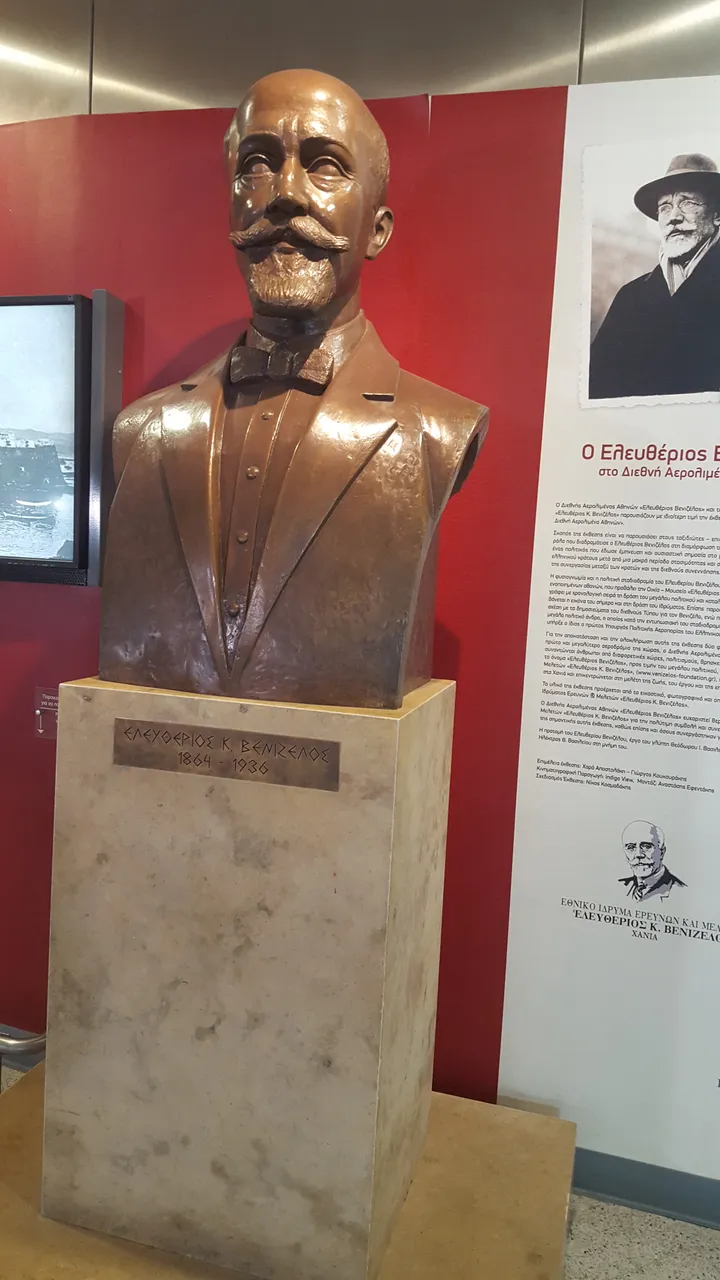
Eleftherios Kyriakou Venizelos was a Greek leader who is remembered for promoting liberal-democratic policies. It is worth to mention that during his time as a leader of the Liberal Greek Party, Venizelos managed to be elected eight times as the Prime Minister of Greece.
Born in Crete, he also played a very significant role in the autonomy of the Cretan State and in its later unification with Greece.
You can read more here and if you have some time, do watch the so nicely done videos about his life!

A number of videos that guide you through Venizelos life and political career!
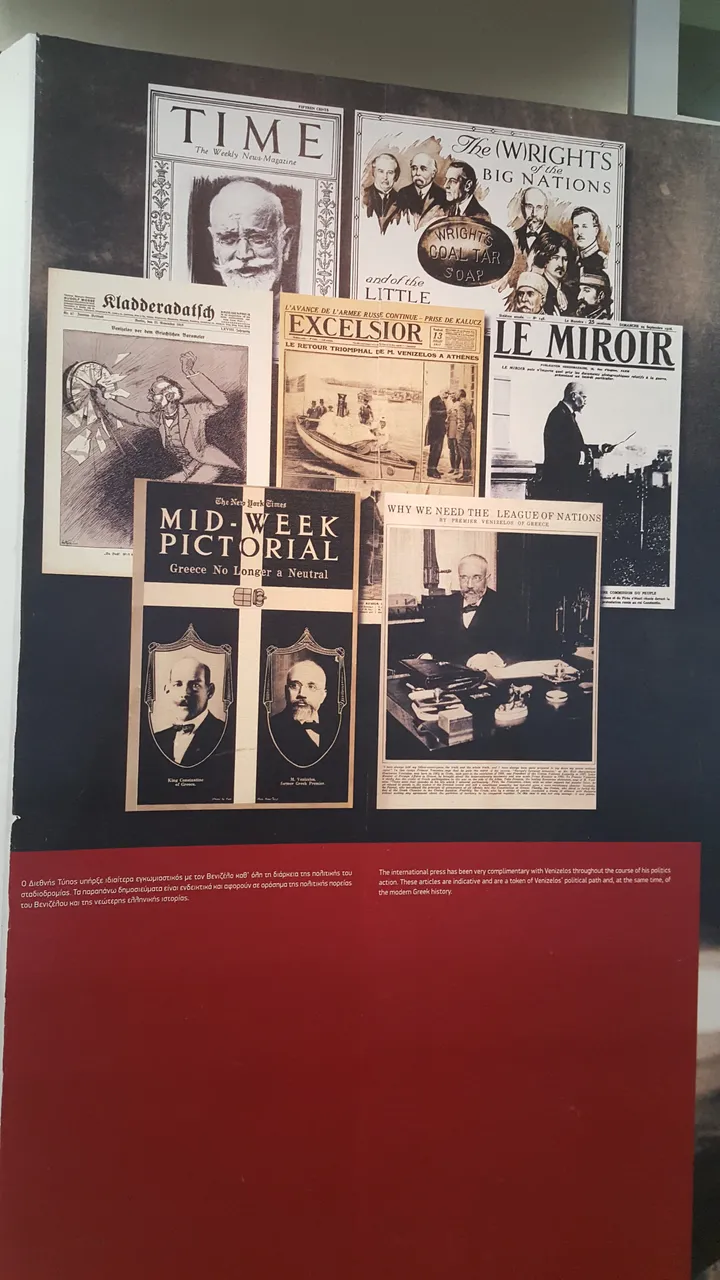
The International press has been very complimentary with Venizelos throughout the course of his political actions. These articles are indicative and are a token of Venizelos' political path and, at the same time, of the modern Greek History
